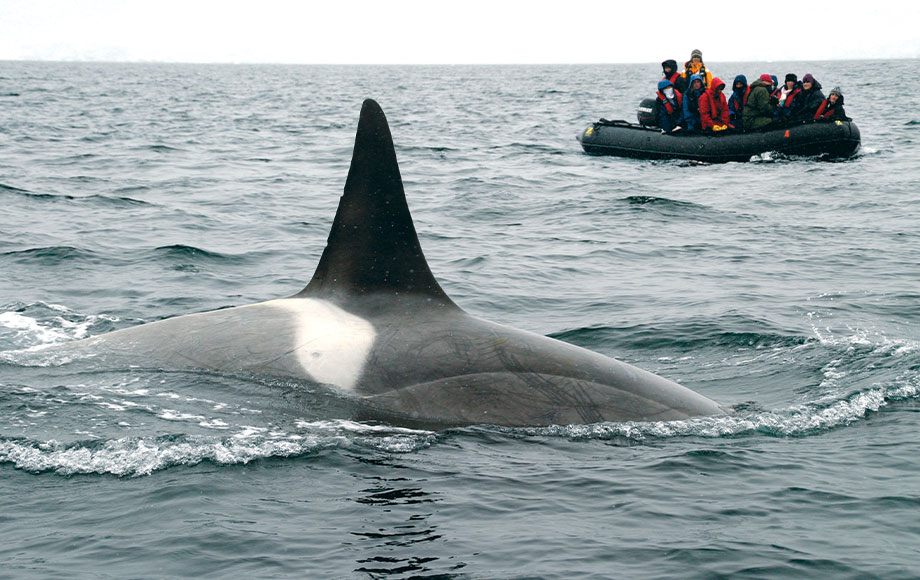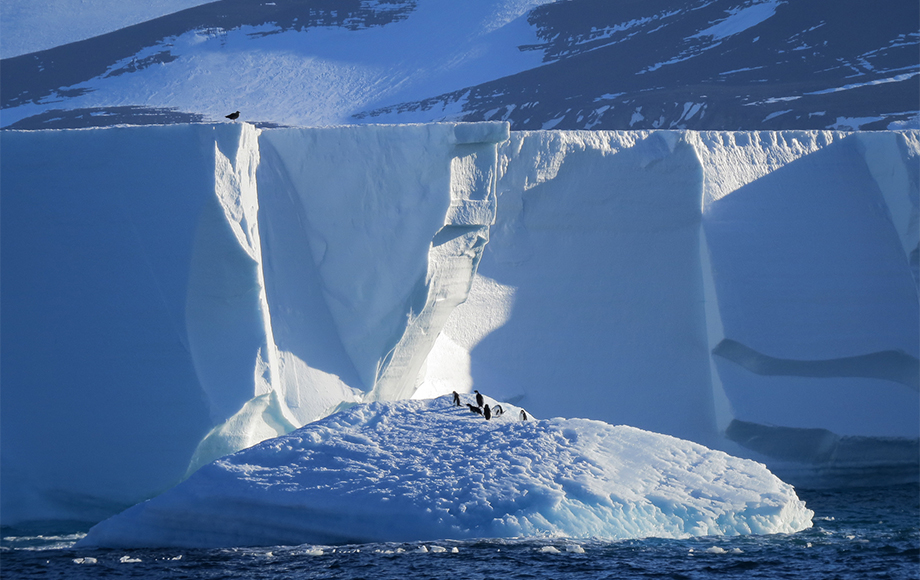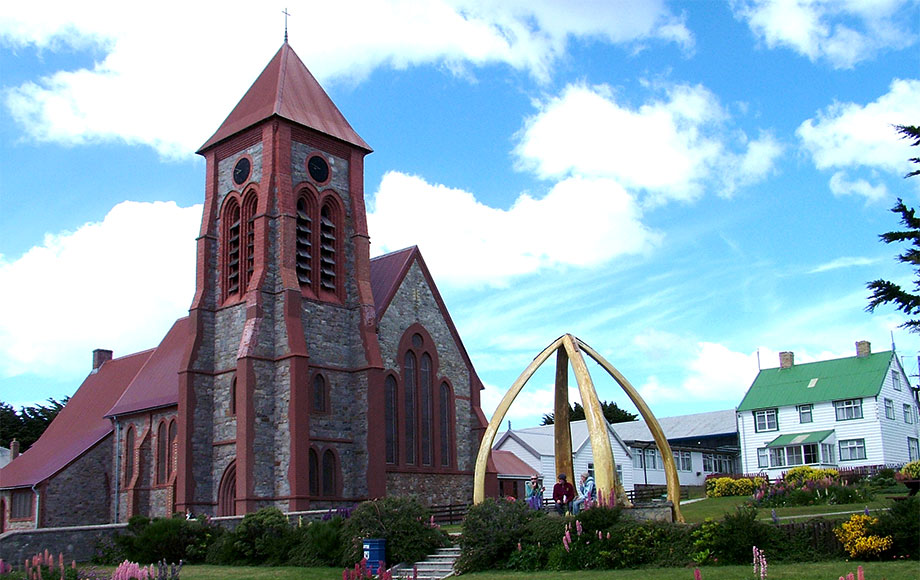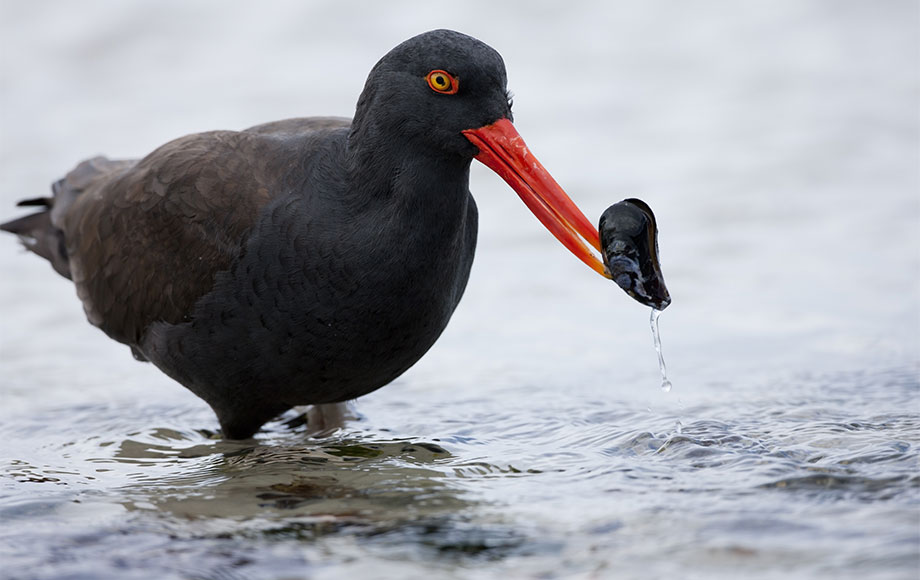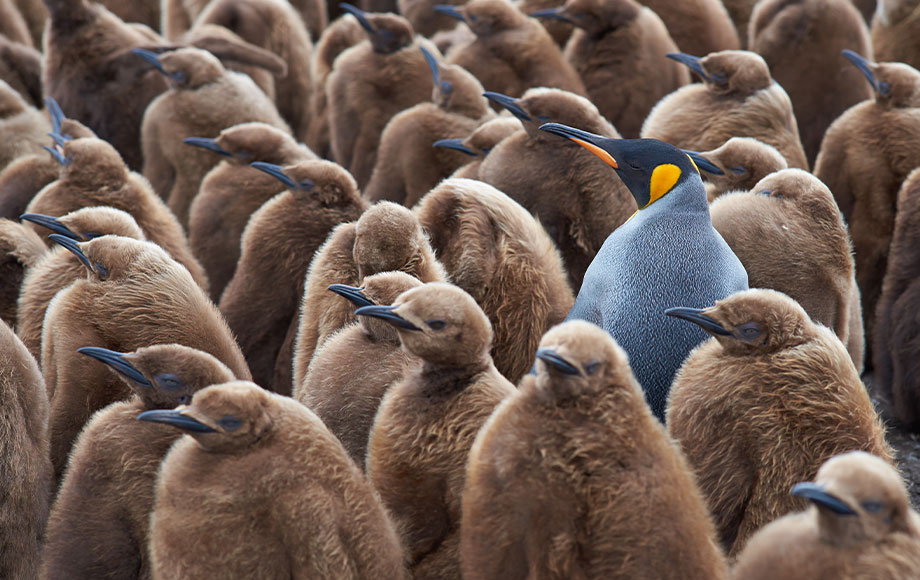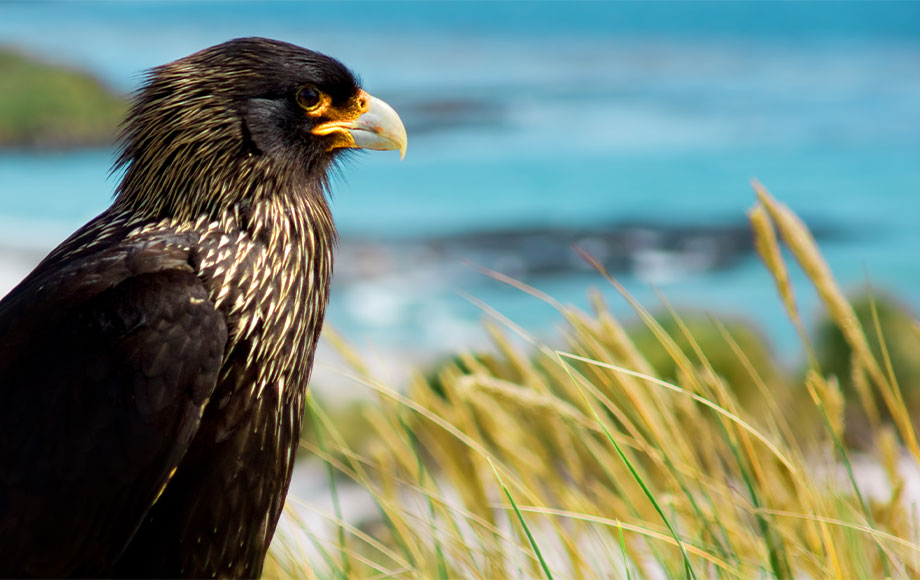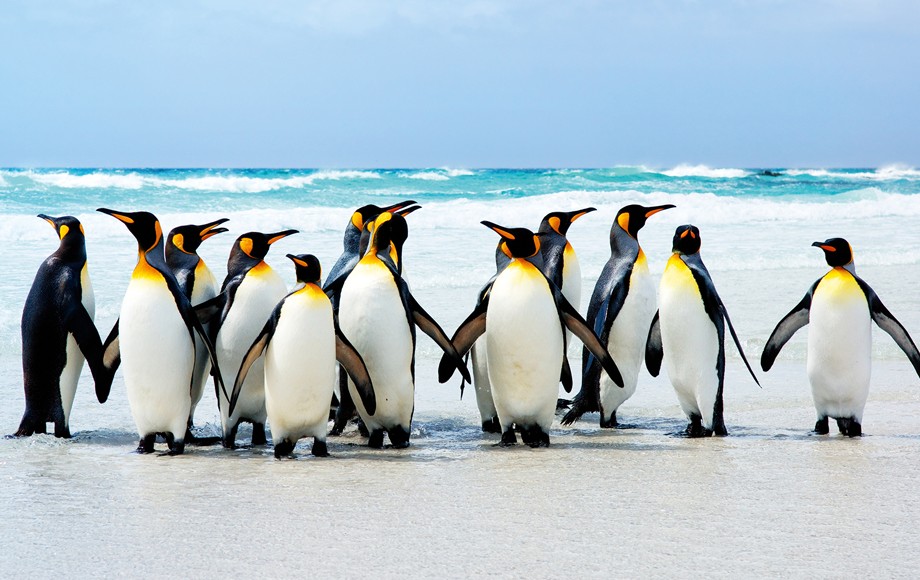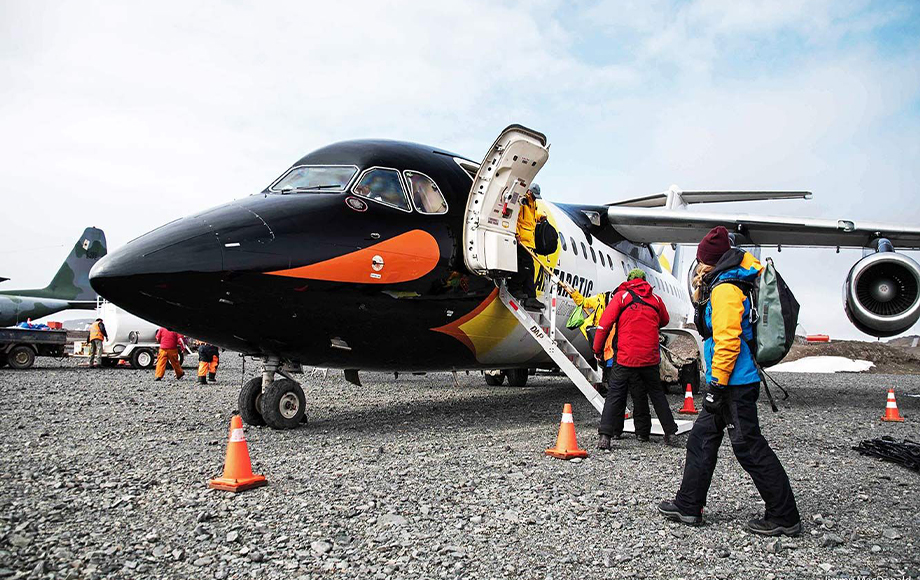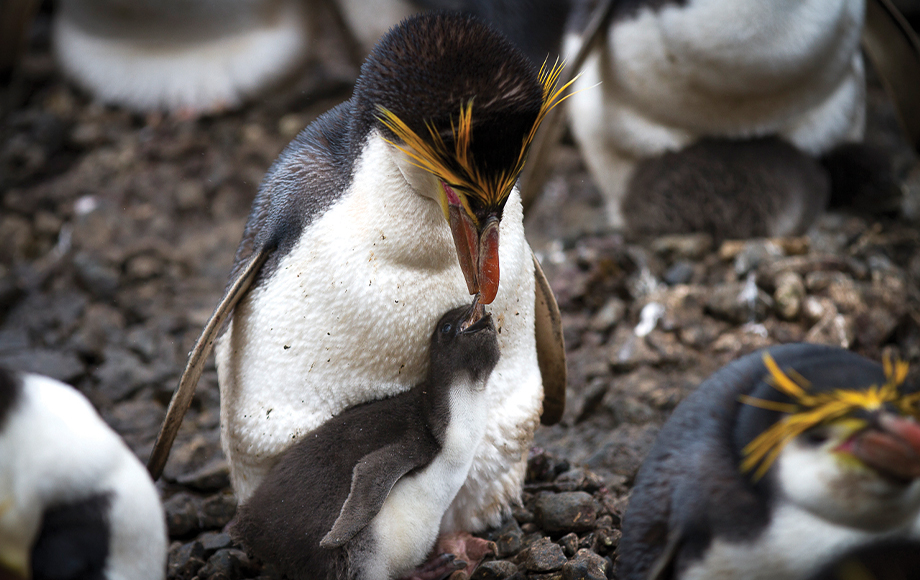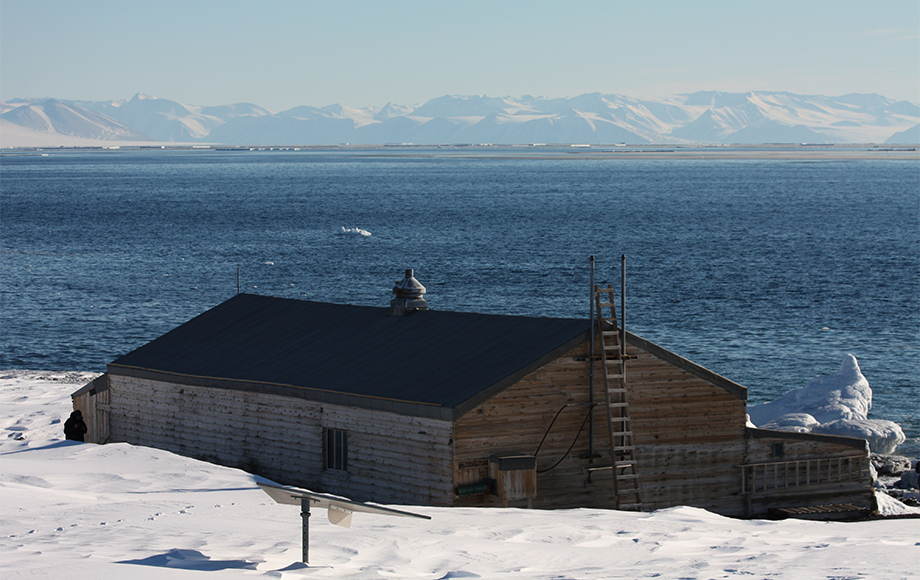Explore of the polar region, visiting the Antarctic Peninsula, the Falkland Islands (Islas Malvinas) and magical South Georgia.
Departures vary in length, but most itineraries are around 20 days in length. Each departure is accompanied by a team of seasoned Expedition Staff.
The Sub-Antarctic Islands are a group of remote islands located in the temperate sub-Antarctic zone. These islands are home to a high level of biodiversity and are some of the least visited places on earth. On this departure travellers will visit the Falkland Islands (Islas Malvinas) and South Georgia. The Falklands are home to a profusion of birdlife, including the world’s largest Black-browed Albatross colony, as well as the tiny historic capital, Stanley.
South Georgia is renowned for its remarkable wildlife and scenery, the grave of legendary explorer Ernest Shackleton and huge colonies of King Penguins. One of the most breath-taking places in the world, South Georgia offers those lucky enough to visit a truly unique experience. The final stop is the Antarctic Peninsula, the most visited section of the ‘white continent’ due to its proximity to South America, and the fact that travellers can now fly to King George Island, removing the need to cross the Drake Passage. Breathtakingly beautiful, the peninsula is a place of pristine snowy landscapes, dramatic mountains, giant icebergs, loud and raucous penguin rookeries and fascinating scientific research stations.
Falkland Islands
The Falkland Islands (Islas Malvinas) are comprised of two large islands – East and West Falkland. The capital of the Falklands (Malvinas) is Stanley (also known as Port Stanley), an interesting town with plenty to see including a cathedral, the insightful Dockyard Museum, cosy cafes, pubs and souvenir shops. The islands are known for the variety of birdlife found there, which includes Magellanic, Gentoo and Southern Rockhopper Penguins; King Penguins have also been spotted on occasion. Seabirds also gather here in large numbers including the largest Black-browed Albatross colony on earth, as well as other species including the flightless Falkland Steamer Duck and the Cobb’s Wren (both endemic to the islands)
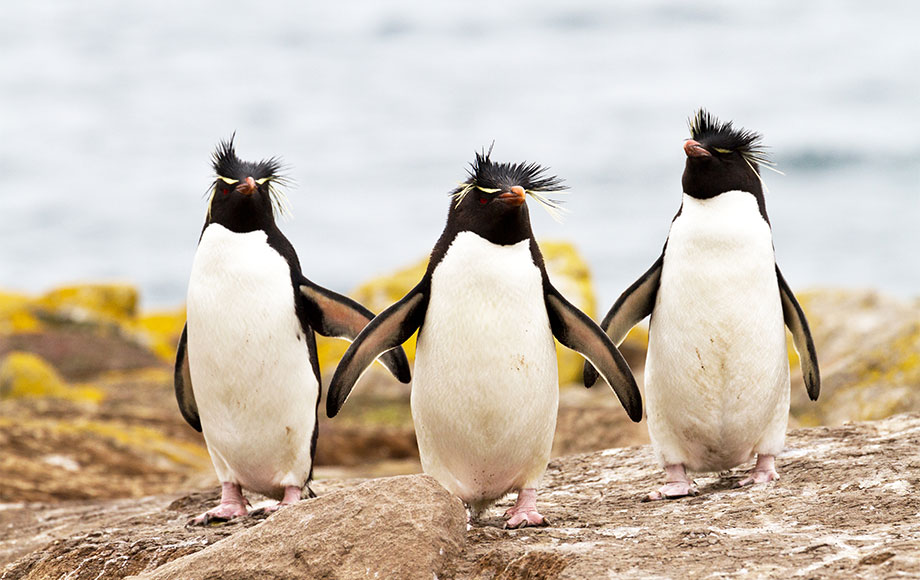
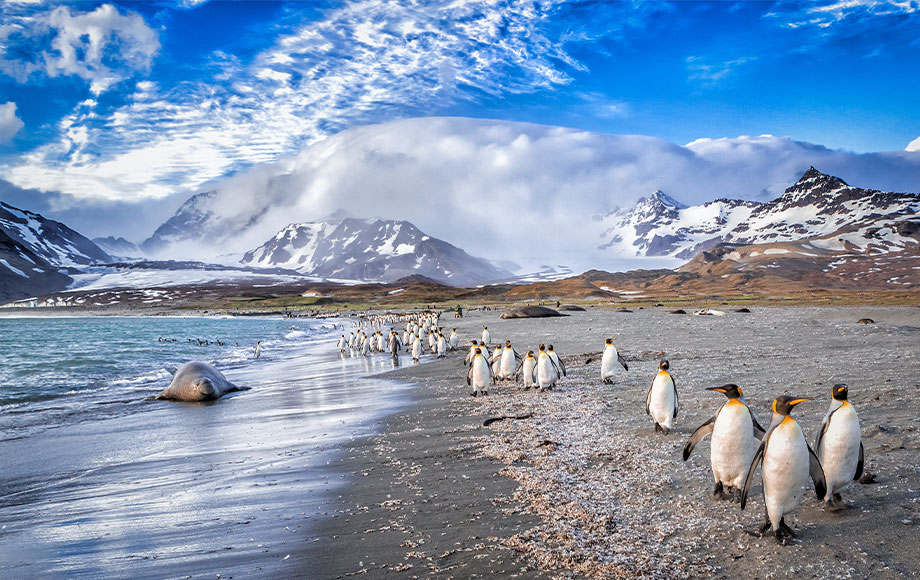
South Georgia
A unique and unspoilt island paradise, walk across the beaches of South Georgia such as wildlife-rich Salisbury Plain, where King Penguins, elephant and fur seals jostle for space. Visit historic whaling stations, learn about early European explorers such as Ernest Shackleton and marvel at the incredible mountain scenery. The island is often referred to as “The Galapagos of the Poles” due to its incredible biodiversity. Zodiac excursions are central to exploring the islands rocky coastline, getting close to nesting seabirds and seal haul-outs.
Tour Details
- Explore the Falkland Islands, renowned for birdlife including the Black-browed Albatross and Flightless Falkland Steamer Duck
- Visit fascinating Port Stanley the capital of the Falklands (Malvinas)
- Discover magical South Georgia – “The Galapagos of the Poles”
- Walk across volcanic beaches amongst elephant and fur seals and King penguins
- Marvel at the sheer beauty of the South Shetland Islands and the Antarctic Peninsula
- Enjoy guided zodiac excursions and landings exploring penguin rookeries
- Search for wildlife such as humpback whales, orcas, Weddell, crab eater and fur seals
- Come face to face with Chinstrap, Adélie and Gentoo Penguins
Most voyages to the Falkland Islands and South Georgia depart from the Argentinian port of Ushuaia. However, some departures may leave from Buenos Aires.
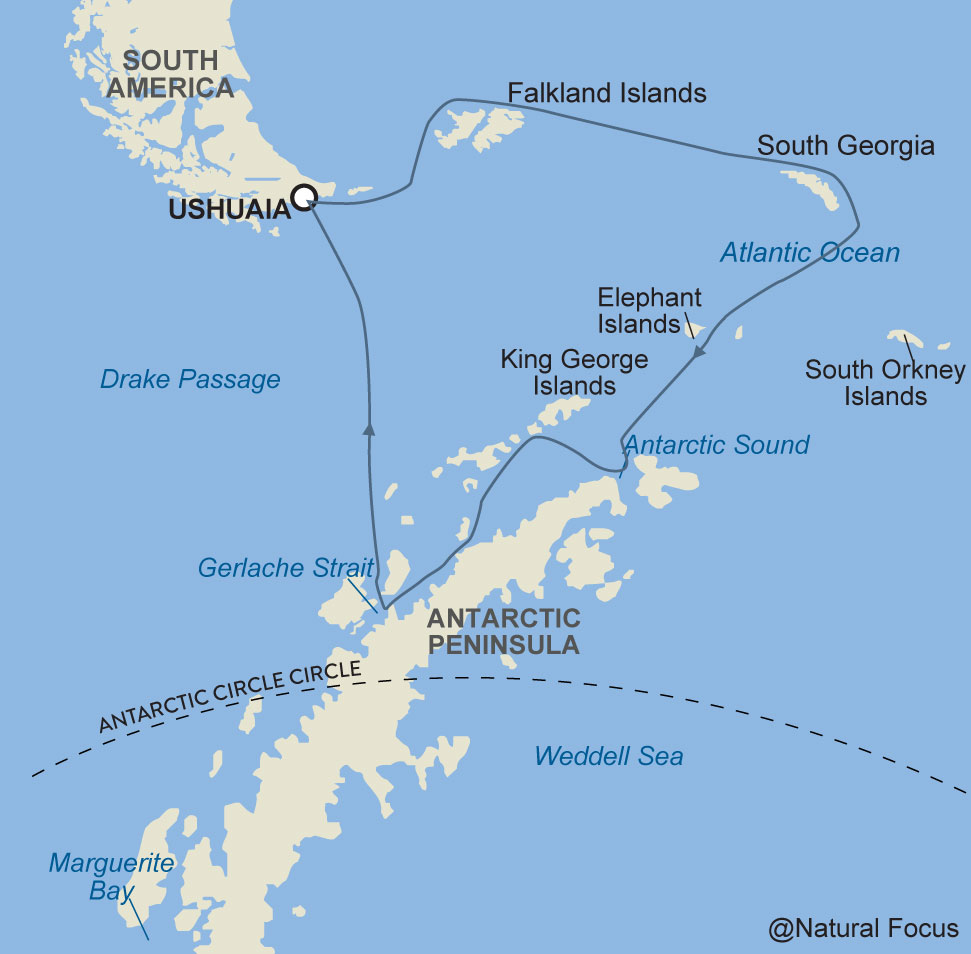
Itinerary
Sample Itinerary
20 days/19 nights
Day 1
Ushuaia, Argentina
Ushuaia is a small town at the very bottom of Argentina and is often seen as the gateway to Antarctica. The town is nestled within the Tierra del Fuego archipelago and is an interesting place to enjoy 1 or 2 pre-nights. It’s also a great place to get any last-minute gear, the town boasts many shops, cafés and restaurants.
Day 2
Embarkation Day
Wake up this morning feeling the anticipation of departure. Most expedition vessels depart in the mid to late afternoon, so you will have a bit more time to explore. When it is time to board, meet your fellow passengers, expedition team and crew and enjoy a bit of time exploring the ship and participating in a safety briefing. Step out on deck as the vessel leaves port and heads out of the Beagle Channel.
Day 3
At Sea
Though it might feel like an empty day on paper, days at sea are always filled with interesting lectures and presentations from the Expedition Team that prepare you for your arrival. Topics might include specific wildlife, glaciology geology or history. There is always time to mingle with fellow passengers as well, perhaps over a drink at the bar or a game of cards.
Days 4-5
Falkland Islands (Islas Malvinas)
The Falkland Islands (Islas Malvinas) is comprised of two large islands – East and West Falkland – as well as 700 odd smaller islands. Stanley (also known as Port Stanley) is the capital of the Falklands (Malvinas) and is a fascinating town with plenty of quaint British character. Wander past terrace townhouses, visit the cathedral, the insightful Dockyard Museum, souvenir shops, cosy cafes and traditional style pubs.
The islands are home to a variety of wildlife and birdlife, including Magellanic, Gentoo and Southern Rockhopper Penguins; King Penguins have also been spotted on occasion. In terms of birdlife, the largest Black-browed Albatross colony on earth can be found here, as well as other species including the flightless Falkland Steamer Duck (endemic to the islands) and the Cobb’s Wren. Expert Expedition staff will always be on hand to answer any questions you might have about the islands.
Days 6-7
At Sea
After a memorable time in the Falklands, set sail southeast to South Georgia. The vessel officially enters Antarctic waters once it crosses the Antarctic Convergence. This is an invisible biological boundary that encircles Antarctica, and varies in latitude. It marks the convergence of the cold Antarctica waters with the warmer waters of the sub-Antarctic rich in nutrients, and attracts huge quantities of whales, seals and birdlife to the region.
Lectures continue on these days, as does the search for birdlife and whales from the observation points on the vessel.
Days 8-11
South Georgia
One of the most incredible sub-antarctic islands, South Georgia is a remote, mountainous island rich in wildlife, birdlife and fascinating human history. Though small, it has an impressive 3,000 metre-high mountain range, and was once a whale and seal hunting location. Visit the remnants of the old whaling stations and also the grave of legendary Antarctic explorer Ernest Shackleton. His grave sits near the settlement of Grytviken, which houses a museum, gift shop, research station and church.
Often referred to as “The Galapagos of the Poles”, South Georgia’s volcanic beaches are home to thousands of King Penguins, fur seals and elephant seals, which, like in the Galapagos, allow you to get up close and personal (at a safe distance). Zodiac excursions are also central to exploring the island, navigating the rocky coastlines, getting close to nesting seabirds and seal haul-out spots.
Days 12-13
At Sea
Say farewell to the Galapagos of the Poles and head for the Antarctic continent itself. These days at sea will again feature insightful presentations that will prepare you for arriving in Antarctica. It is also a good option to catch up on some photo-editing, perhaps creating a bit more space on your camera card. If conditions allow, there may a chance to land on day 13 at one of the outer islands off the Antarctic Peninsula. Alternatively, depending on your ship, this is a great time to use the onboard facilities.
Days 14-17
South Shetland Islands and Antarctic Peninsula
It’s a truly memorable moment when you first arrive in Antarctica, and one that’s difficult to explain. Everyone is on deck looking out for the first sign of land, or the first iceberg, or simply just in awe, marvelling at one of the planets last untouched wildernesses. Being so far south, you can expect long days, where the daylight lasts between 18-24 hours.
Excursions vary between jumping aboard a zodiac and exploring the coastline, visiting historical sites or research stations, hiking along a ridgeline, wandering along beautiful beaches and spending time walking amongst the hubbub of penguin colonies. Penguin species you might encounter include Adélie, Chinstrap and Gentoo whilst seal species you might spot on land or in a zodiac include Weddell, fur, crab eater and possibly leopard seals.
Cruising the narrow, dramatic straits also offers amazing scenic highlights. If many species such as humpback whales or orcas are spotted, the Captain may also stop the vessel to view them – even jumping out into the zodiacs for a closer look if time allows. For those that wish to partake in an Antarctic tradition, there may always be a chance to take the ‘polar plunge’ – jumping straight into the cold waters for a ‘refreshing’ swim.
Depending on the departure, there are several other activities that are available at extra cost, such as kayaking, snorkelling or camping on the ice.
Days 18-19
Crossing the Drake Passage
Crossing the renowned Drake Passage is a memorable part of any Antarctic adventure. Enjoy some time celebrating with your fellow passengers as you leave Antarctic waters, not forgetting to keep an eye out for any last whales or sea birds you might see. A few lectures and films will continue to be presented over these two days.
Day 20
Tour Ends, Ushuaia
On arrival back in Ushuaia, say farewell to newfound friends and your friendly Expedition Team, disembarking after breakfast. Tour ends.
Please note: The above itinerary is provided as a guide to what you may see and do. Conditions may vary and make it necessary or desirable to alter the proposed itinerary if the need arises. This can include poor weather and opportunities for making unplanned excursions.
More Antarctica tours
We have a unique selection of Antarctic Peninsula cruise options carefully chosen for their itineraries, as well as the vessels used. Our selection of ice-strengthened ships are all small to medium in size, with a maximum of 67-199 passengers, ensuring an authentic, up-close encounter with the untrammelled wilderness. All of our cruises and tours are completely tailor made to suit our clients interests, budget, and timeframe.
